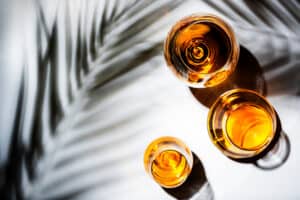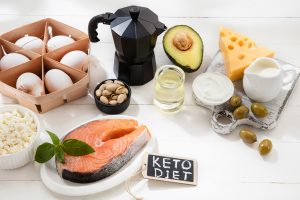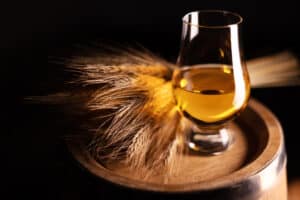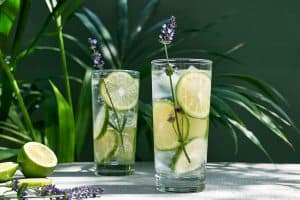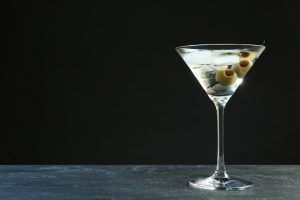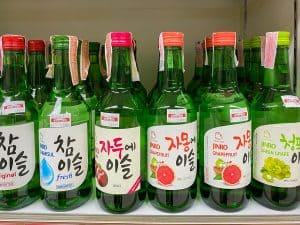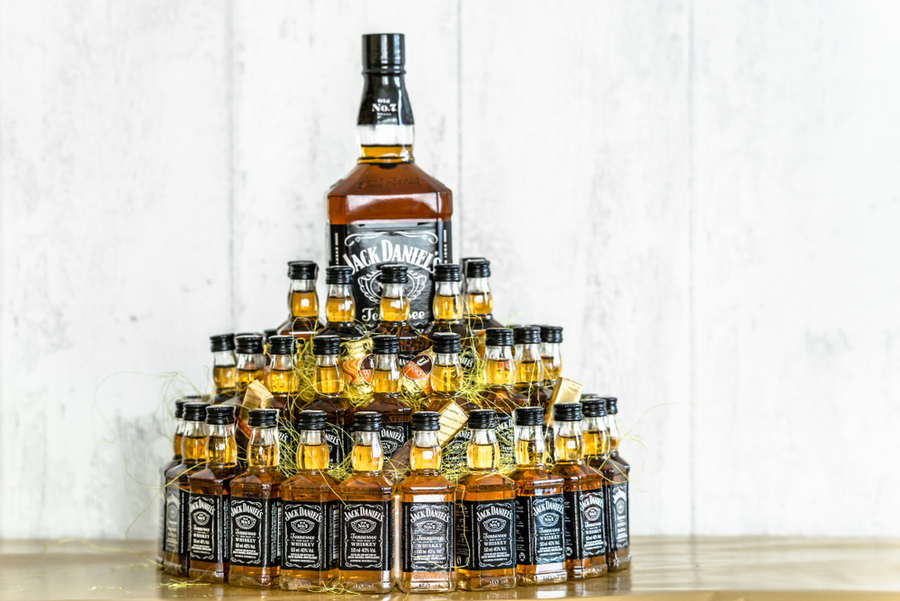
Sour mash whiskey, or bourbon, is created through the sour mash process. Sour mash whiskey doesn’t taste sour, either.
A sour mash whiskey is a whiskey where the base recipe or mash is soured to provide producers and consumers with a consistent product that keeps on tasting great—batch after batch.
Sour mash whiskey is produced by distillers when producers use a part of the previous batch’s spent mash in the next batch’s fermentation. The sour or spent mash is vital to lower the new mash’s pH level and inhibit other microorganisms from growing and spoiling it. Sour mash whiskey is a method distillers use to create whiskey, but the final whiskey doesn’t taste sour.
We’ll investigate what sour mash is and how producers make sour mash before turning our attention to what sour mash whiskey is. Finally, we’ll examine two key figures in the sour mash whiskey industry.
What Is Sour Mash?

Simply put, sour mash whiskey is made using the sour mash process. So let’s start at the beginning. The mash is the ground grain and water mixture, fermented with yeast to produce alcohol.
Souring can be done in one of two ways which we’ll explore in more detail below.
But first, let’s briefly look at how whiskey is created. Each step is crucial to ensure a quality product.
- First, you’ll need to mill the grains to create a coarse powder or meal to prepare for mashing. Malting, usually barley, is optional—the grains are soaked in water to trick them into germinating, which changes the grains’ chemical structure and releases starch sugars. The germination process is stopped by drying the barley, which is then milled for the next step.
- Preparing the mash is the second step by mixing the coarsely milled grains with water and agitating the mixture. During this step, starches are released into the mixture, which will break down into sugars during fermentation. The finished mash is called the wort.
- During fermentation, yeast is introduced to the wort, which will feed on the starches, break it down into sugars, and finally consume the sugars, producing the wash. The by-product produced by the yeast is alcohol.
- The fermented liquid is transferred to stills. Because alcohol evaporates at a much lower temperature than water, it evaporates from the wash first. The distillate’s first part (called the head) is discarded because it is unsafe for human consumption, and so is the last part, or tail. The middle part, or heart, is where all the flavor lies and is what goes through to the next step.
- The final step is aging the distilled whiskey in wooden barrels for several years. During the maturation process, the barrel will interact with the whiskey inside as the barrel swells and contracts with temperature fluctuations. The whiskey inside undergoes a dramatic change, and its flavor and aroma are developed.
This is the whisky process in a nutshell. Next, we’ll investigate sour mash and how it is created.
Adding Acid
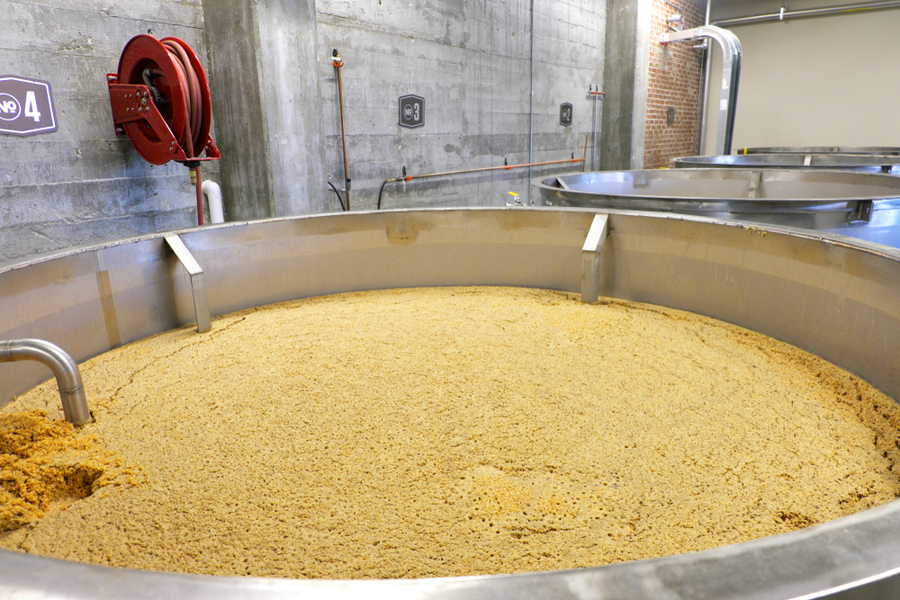
Distillers don’t add strong acids like pool acid to their mixtures. According to Charles Cowdery, writing for Whiskey Mag, Buffalo Trace experimented by souring their mash by introducing lactobacillus bacteria to produce lactic acid.
In turn, this soured the mash. Lactobacillus bacteria are responsible for helping you turn milk into yogurt; the bacteria also helps us make cheese and sourdough bread. A pretty helpful microscopic critter, we’d say!
The Buffalo Trace experiment proved a few things to the distillers: the mash can be soured without using the slop from a previous fermentation. The lactobacillus bacteria has the same effect as preparing a sour mash. Still, the outcome is different in terms of taste.
This 2002 experiment was so successful that Buffalo Trace decided to age and finally bottled their experiment. Nine years later, they released Colonel E. H. Taylor, Jr. Old Fashioned Sour Mash Bourbon Whiskey.
Tasting notes mention a floral aroma and hints of freshly baked bread with a fresh and light taste in the mouth, and the finish is clean with a slight hint of leather.
Using Spent Mash or Slop

The ‘traditional’ way of creating a sour mash whiskey is to use an amount of the previous batch’s spent mash to sour the next set of fermenting mash.
According to Chuck Cowder, all of today’s major American whiskey distilleries use this technique—mixing spent mash with the new in one-to-three or one-to-four parts of spent mash to fresh mash.
The sour or spent mash is vital to lower the new mash’s pH level and inhibit other microorganisms from growing and spoiling it all together.
What Is Sour Mash Whiskey?
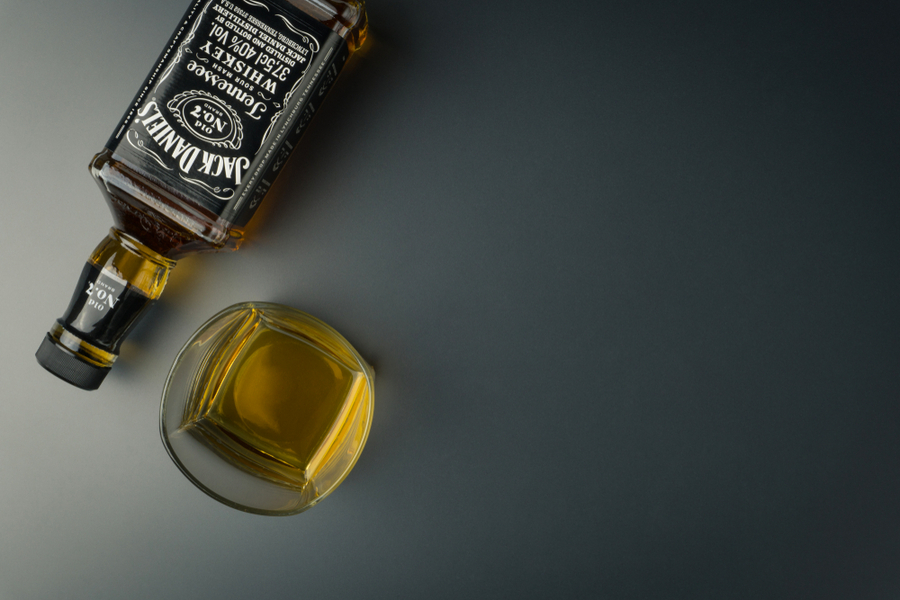
The pH levels need to be carefully controlled to create the optimal fermentation of the mash. Using a part of the spent mash, producers can maintain and balance the pH levels and promote consistency from batch to batch.
Sour mash whiskey is not a type of whiskey, just a process used by distillers. Sour mash will cause the yeast to create different flavors. A sour mash will not produce a sour-tasting whiskey, and you cannot determine whether a producer used a sour mash to make the whiskey.
In short, sour mash whiskey is whiskey where the base recipe or mash is soured to provide producers and consumers with a consistent product that keeps on tasting great—batch after batch.
Let’s examine two prominent figures in the sour mash process next.
The Catherine Carpenter Recipes
Bourbon was usually a man’s game back in the day. Still, Catherine Carpenter, a twice-widowed mother of nine, shows us that women can also make bourbon.
Catherine could not read or write, but that didn’t stop her—she probably dictated her recipes and weaving patterns to one of her children, who wrote them down in a neat cursive hand.
Catherine’s recipes came to light when the Carpenter family donated a collection of their family papers to the Kentucky Historical Society in 1995. Catherine’s recipes are dated 1818.
Of interest are Catherine’s recipes for sour and sweet mash whiskey. Catherine was a twice-widowed mother who was educated and a businesswoman with good business acumen.
She was a well-to-do land owner, and distilling whiskey probably supplemented her income. You can read Catherine’s sour mash recipe here, penned in a beautiful cursive hand.
In all probability, ‘hot slop’ is spent mash from a previous batch of distilled whiskey. Distillers colloquially refer to spent mash after a distillation run as ‘slop’ because it is usually used to feed livestock.
The slop contains no nutrients, alcohol, sugar, or living yeast. Still, it contains nutrients and the acid required to keep the next batch of mash ‘healthy’ pH levels. It inhibits other bacteria from spoiling the taste. We think Catherine was quite thrifty and innovative.
While one batch of whiskey is being aged, the next one is already prepared. The leftover slop could be used for feeding her livestock.
Catherine Carpenter’s Recipe
For the curious, Catherine’s 1818 recipe, transcribed from the original, reads as follows:
Receipt for Distilling by a Sour Mash
Put into the mash tub six bushels of very hot slop then put in one bushel of corn meal ground pretty course. Stir well then sprinkle a little meal over the mash. Let it stand 5 days, that is 3 full days betwist the day you mash and the day you cool off – on the fifth day put in 3 gallons of warm water then one gallon of rye meal and one gallon of malt. Work it well into the mash and stir 3 quarters of an hour then fill the tub half full of luke warm water. Stir it well and with a fine sieve or otherwise break all of the lumps fine then let stand for three hours then fill up the tub with luke warm water.
Let’s break down the measurements above into modern terms:
| Ingredient | US Bushel/Gallon | US Customary Equivalent | Metric Equivalent | Total US volume | Total Metric Volume |
|---|---|---|---|---|---|
| Hot slop | 6 bushels | 9.3 fl gallons | 35.23 liters | 55.8 gallons | 211.38 liters |
| Corn meal | 1 bushel | ± 56 lbs | 25.40 kg | ca. 56 lbs | 25.40 kg |
| Warm water | 3 gallons | 3 fl gallons | 11.36 liters | 3 gallons | 34.08 liters |
| Rye meal | 1 gallon | ± 1.43 lbs | ± 0.65 kg | ± 1.43 lbs | ±0.65 kg |
| Malt | 1 gallon | ± 2.8 lbs | ± 1.27 kg | ± 2.8 lbs | ± 1.27 kg |
The distillers at Brown-Forman are planning to release a small-batch whisky in 2026 based on Catherine Carpenter’s unique sour mash recipe.
The release will coincide and commemorate the War of Regulation and the Battle of Alamance—a battle in 1771 and the last during the North Carolina uprising and the journey to becoming the United States of America.
Some pictures here show the historical moment when Brown-Forman staff came together and revived Catherine’s recipe.
Unfortunately, we do not know how widespread Catherine’s recipe or whiskey was or whether she significantly influenced the whiskey landscape in Kentucky.
We are glad that Brown-Forman is taking her recipe and producing a whiskey based on her recipe and introducing it to a much wider audience than she would have ever reached.
Dr. James C. “Jim” Crow’s Involvement
This Jim Crow (1789–1856) is a positive one altogether and not associated with the terrible laws. Jim is credited with perfecting the sour mash process used to create sour mash bourbon whiskey; however, no historical proof points out that this is the truth.
Jim Crow was born in Inverness, Scotland, and graduated in medicine from Edinburgh University in 1822. Jim Crow used his scientific training to elevate the whiskey world.
During his tenure at the Glenn’s Creek Distillery in Woodford County, Kentucky, he tested the sugar content in the whiskey with a saccharometer. Through a litmus paper test, he tested the acidity in the mash, which led to his decision to age his Old Crow whiskey before selling it.
Jim Crow is credited as one of the founders of modern bourbon.
Conclusion
There you have it. Sour mash whiskey is a process and not a type of whiskey. The name refers to creating a sour mash that ensures consistent results in a producer’s batches of whiskey. As an afterthought, sour mash whiskey doesn’t taste sour, and you cannot detect whether a producer used the sour mash process, although almost everybody does—they just don’t mention it on the label.

